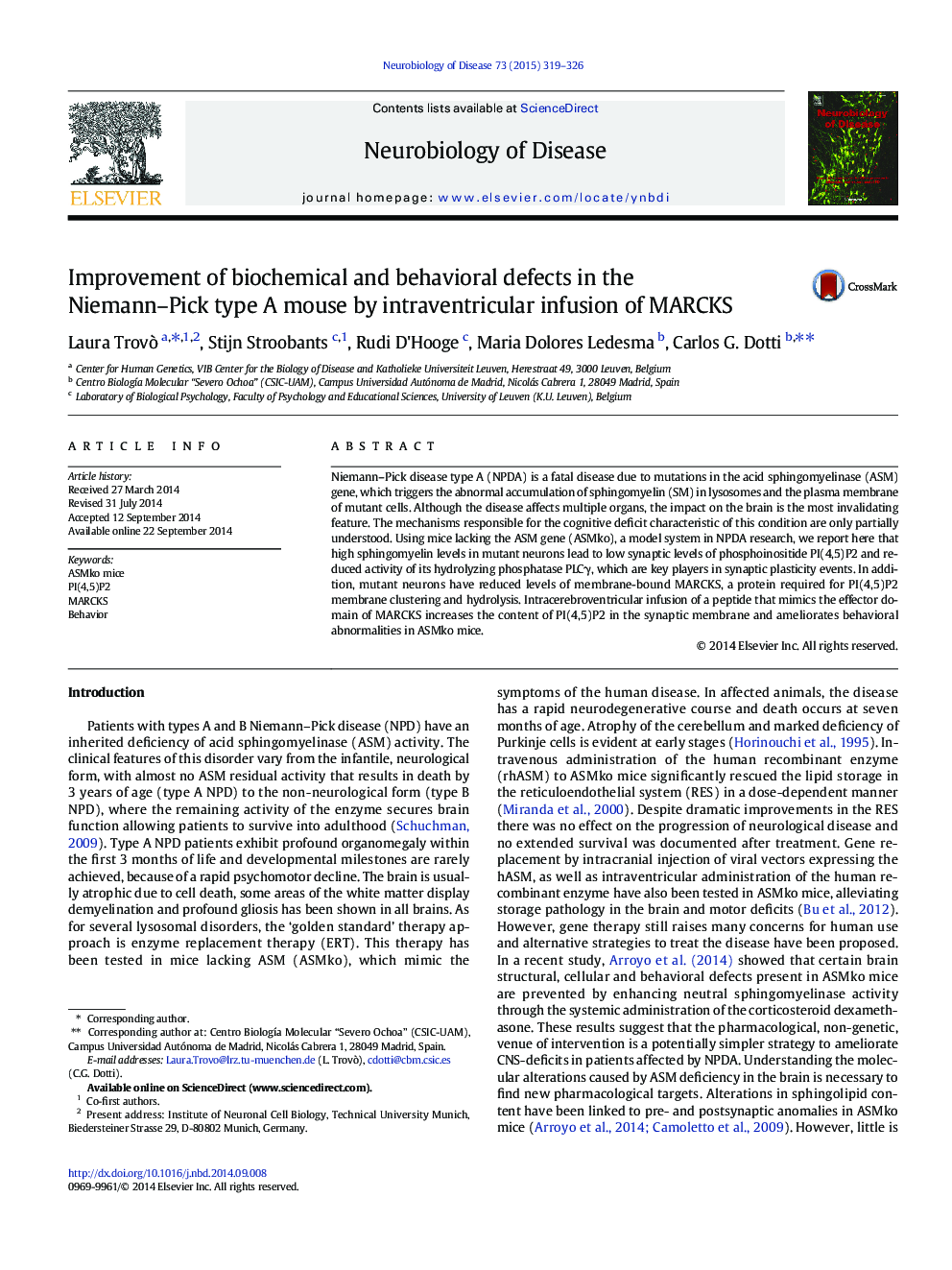| Article ID | Journal | Published Year | Pages | File Type |
|---|---|---|---|---|
| 6021703 | Neurobiology of Disease | 2015 | 8 Pages |
Abstract
Niemann-Pick disease type A (NPDA) is a fatal disease due to mutations in the acid sphingomyelinase (ASM) gene, which triggers the abnormal accumulation of sphingomyelin (SM) in lysosomes and the plasma membrane of mutant cells. Although the disease affects multiple organs, the impact on the brain is the most invalidating feature. The mechanisms responsible for the cognitive deficit characteristic of this condition are only partially understood. Using mice lacking the ASM gene (ASMko), a model system in NPDA research, we report here that high sphingomyelin levels in mutant neurons lead to low synaptic levels of phosphoinositide PI(4,5)P2 and reduced activity of its hydrolyzing phosphatase PLCγ, which are key players in synaptic plasticity events. In addition, mutant neurons have reduced levels of membrane-bound MARCKS, a protein required for PI(4,5)P2 membrane clustering and hydrolysis. Intracerebroventricular infusion of a peptide that mimics the effector domain of MARCKS increases the content of PI(4,5)P2 in the synaptic membrane and ameliorates behavioral abnormalities in ASMko mice.
Related Topics
Life Sciences
Neuroscience
Neurology
Authors
Laura Trovò, Stijn Stroobants, Rudi D'Hooge, Maria Dolores Ledesma, Carlos G. Dotti,
